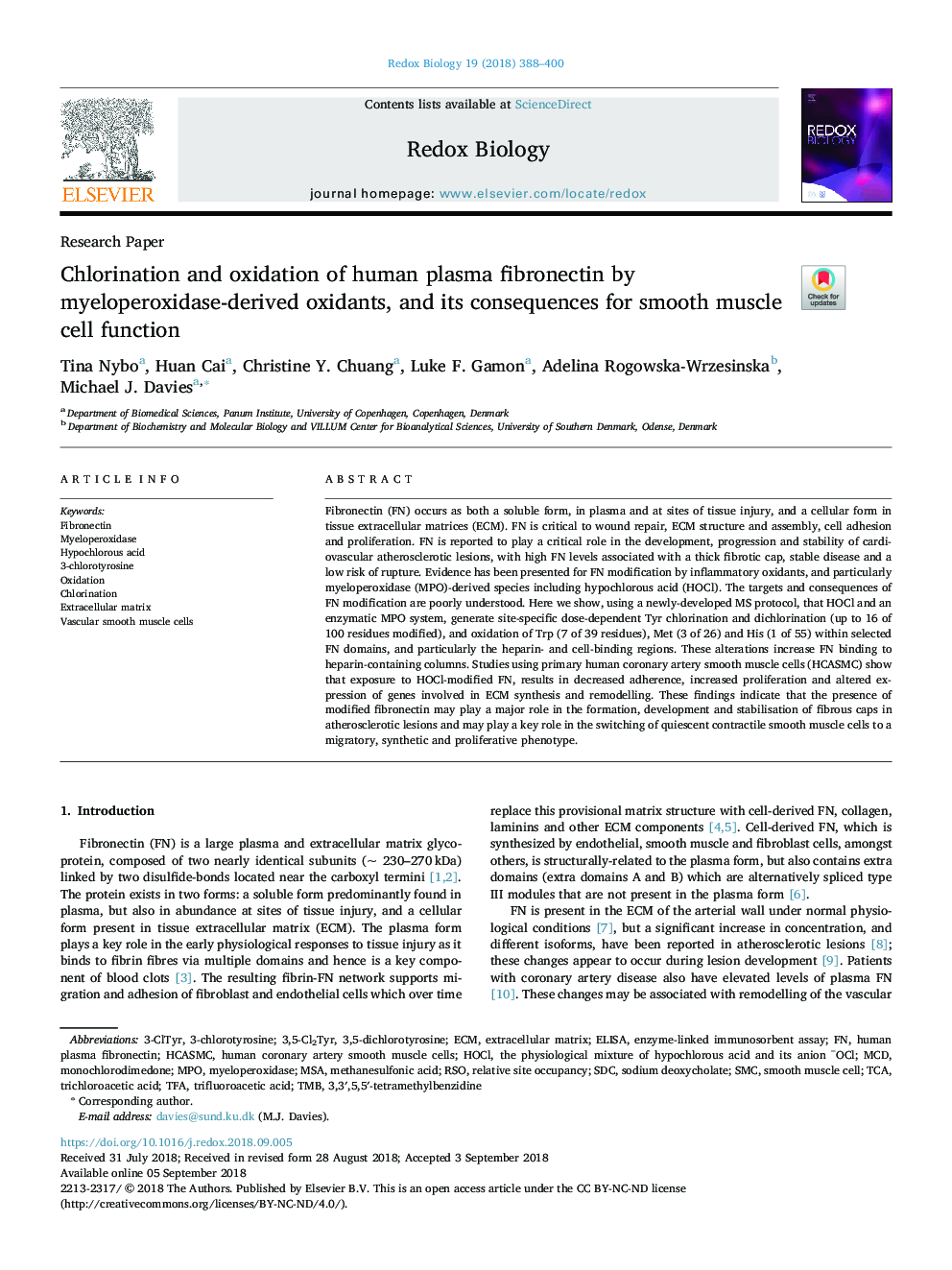| Article ID | Journal | Published Year | Pages | File Type |
|---|---|---|---|---|
| 9954068 | Redox Biology | 2018 | 13 Pages |
Abstract
Fibronectin (FN) occurs as both a soluble form, in plasma and at sites of tissue injury, and a cellular form in tissue extracellular matrices (ECM). FN is critical to wound repair, ECM structure and assembly, cell adhesion and proliferation. FN is reported to play a critical role in the development, progression and stability of cardiovascular atherosclerotic lesions, with high FN levels associated with a thick fibrotic cap, stable disease and a low risk of rupture. Evidence has been presented for FN modification by inflammatory oxidants, and particularly myeloperoxidase (MPO)-derived species including hypochlorous acid (HOCl). The targets and consequences of FN modification are poorly understood. Here we show, using a newly-developed MS protocol, that HOCl and an enzymatic MPO system, generate site-specific dose-dependent Tyr chlorination and dichlorination (up to 16 of 100 residues modified), and oxidation of Trp (7 of 39 residues), Met (3 of 26) and His (1 of 55) within selected FN domains, and particularly the heparin- and cell-binding regions. These alterations increase FN binding to heparin-containing columns. Studies using primary human coronary artery smooth muscle cells (HCASMC) show that exposure to HOCl-modified FN, results in decreased adherence, increased proliferation and altered expression of genes involved in ECM synthesis and remodelling. These findings indicate that the presence of modified fibronectin may play a major role in the formation, development and stabilisation of fibrous caps in atherosclerotic lesions and may play a key role in the switching of quiescent contractile smooth muscle cells to a migratory, synthetic and proliferative phenotype.
Keywords
TCAHOClECMTFASDCMSATMBMCDRSOSMCHuman plasma fibronectinhCASMC3,5-dichlorotyrosine3-chlorotyrosine3,3′,5,5′-tetramethylbenzidineMPOTrifluoroacetic acidtrichloroacetic acidMethanesulfonic acidhypochlorous acidOxidationEnzyme-linked immunosorbent assayELISASodium deoxycholateSmooth muscle cellVascular smooth muscle cellshuman coronary artery smooth muscle cellsFibronectinExtracellular matrixMonochlorodimedonemyeloperoxidaseChlorination
Related Topics
Life Sciences
Biochemistry, Genetics and Molecular Biology
Ageing
Authors
Tina Nybo, Huan Cai, Christine Y. Chuang, Luke F. Gamon, Adelina Rogowska-Wrzesinska, Michael J. Davies,
